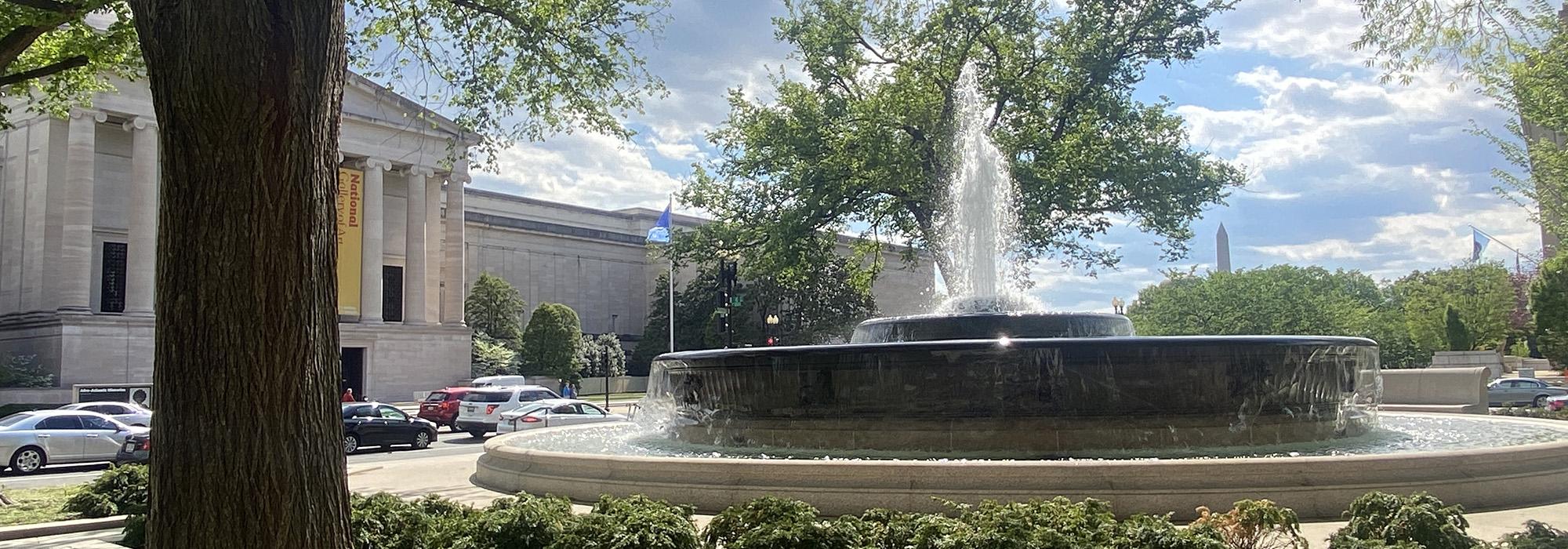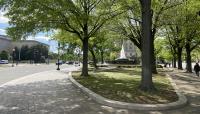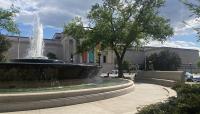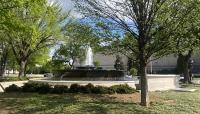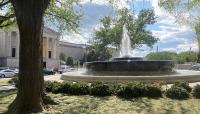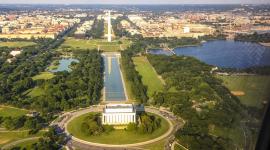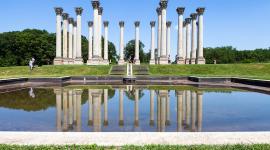Landscape Information
In 1936 philanthropist Andrew W. Mellon donated his art collection and created an endowment to establish the National Gallery of Art. After his death in 1937, the Andrew W. Mellon Memorial Committee privately raised funds to erect a fountain across Constitution Avenue from the museum (which opened in 1941), in a triangular public park (originally designated Reservation No. 546).
After approval from a Joint Resolution of the Senate and House of Representatives, the U.S. Commission of Fine Arts, and the Washington D.C. Highway Commission, a park with a monumental fountain designed by Otto Eggers was dedicated in 1952. Inspired by a fountain in Genoa, Italy, the Mellon Fountain consists of three nested bronze basins with a central plume jet, from which water flows twenty feet into the air and over the basins into a low granite-curbed pool measuring eighteen yards in diameter. Sculptor Sidney Waugh designed twelve relief sculptures cast in bronze for the wall of the lowest basin, featuring the twelve signs of the zodiac. A granite path two steps up from the sidewalk level surrounds the fountain, with a high-backed granite bench designed by Waugh and inscribed with a dedication to Mellon facing the fountain and the triangular park’s apex.
Clarke, Rapuano, and Holleran designed the original landscape that included four elm trees and extensive ground cover. Alterations over the years included the introduction of understory hedges and shrubs by the National Park Service in 1960s, and in 1984, the Pennsylvania Avenue Development Corporation added a handicap-accessible ramp with bronze handrails extended the park to the east, and introduced willow oaks along the Pennsylvania Avenue sidewalk. In 2016 the National Gallery of Art undertook the fountain’s restoration as well as a rehabilitation of the park’s original landscape, replacing an aging elm and two willow oaks.
Mellon Park and the Mellon Fountain are listed in the National Register of Historic Places as contributing resources within the Pennsylvania Avenue National Historic Site (1965) and L’Enfant Plan of the City of Washington, D.C. (1997), and the Pennsylvania Avenue Cultural Landscape Inventory (2016).



